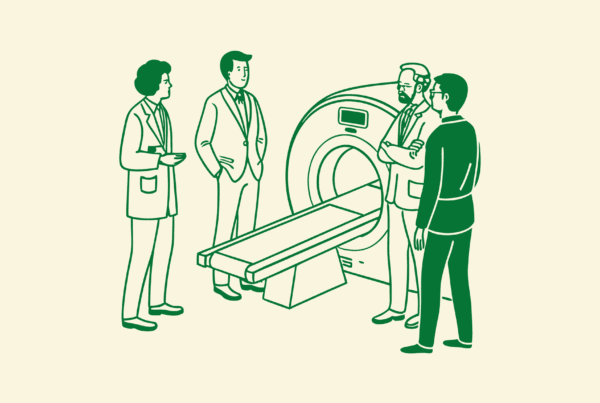If you own an Assisted Living Facility (ALF) in New Orleans, you are in a unique position. The market is defined by rapidly growing demand from an aging population and a shortage of available facilities. This guide provides key insights into the local market, valuation, and sale process. Understanding how to navigate these conditions is the first step toward a successful and rewarding exit. We know that every owner deserves to understand their options before making a decision.
A Market Defined by High Demand
The New Orleans assisted living market presents a compelling opportunity for facility owners considering a sale. Demand is climbing steadily, driven by a growing senior population both locally and nationally. In Orleans Parish alone, over 58,000 households include a senior. Yet, construction of new facilities has not kept pace, creating a supply shortage that increases the value of established, quality operations like yours.
This environment is supported by strong financial indicators. Three key drivers define the current landscape:
1. Explosive National Growth: The U.S. assisted living market has grown over 10% annually for the past three years and is projected for continued expansion.
2. Robust Local Demand: With 79,200 people aged 60 and older in New Orleans, the need for quality senior care is clear and present.
3. Favorable Pricing: The average monthly cost for assisted living in New Orleans ranges from approximately $3,973 to $4,700, reflecting a healthy and sustainable revenue model for operators.
Beyond the Numbers: Preparing Your Facility
A strong market is only one part of the equation. For a successful sale in New Orleans, you must pay close attention to local and state-specific factors. Louisiana’s Department of Health and Hospitals oversees licensing under the “Adult Residential Care” framework, which has precise requirements for staffing, insurance, and care levels. The City of New Orleans adds another layer with its own annual operating licenses and emergency preparedness ordinances.
Potential buyers will scrutinize your compliance with these regulations. They will also look closely at your operations, from the quality of your staff to the efficiency of your day-to-day management. A facility with a proven track record of regulatory adherence and smooth operations is significantly more attractive and valuable.
Who Is Buying and How Are Deals Getting Done?
The high demand for ALFs in New Orleans has attracted a diverse group of interested buyers. Understanding who they are is key to positioning your practice for the best possible outcome.
The Buyer Landscape
Buyers are not a single group. They range from large, publicly-traded healthcare companies and private equity-backed operators looking to expand their regional footprint to smaller, local providers and even high-net-worth individuals. Each buyer type has different goals. A corporate aggregator may prioritize your facility’s financial performance and potential for integration, while a smaller operator might be more focused on its community reputation and culture. Transaction activity is robust, as seen in successful exits like the one facilitated for Quality Senior Living Partners’ two New Orleans facilities.
Finding the Right Strategic Partner
Identifying the right buyer goes beyond finding someone willing to pay your price. The goal should be to find a strategic partner who will protect your legacy and care for your staff and residents. This is achieved not by just listing your facility for sale, but by running a confidential, structured process that creates competitive tension among a curated list of qualified buyers. This approach ensures you are negotiating from a position of strength.
Determining Your Facility’s True Worth
Valuing an Assisted Living Facility is more complex than valuing a typical business. It has two main components: the value of your ongoing business operations and the value of your real estate. Sophisticated buyers focus on a key metric called Adjusted EBITDA (Earnings Before Interest, Taxes, Depreciation, and Amortization).
This isn’t the same as the profit on your tax return. We calculate Adjusted EBITDA by taking your net income and adding back expenses like depreciation, interest, and certain owner-specific costs that a new owner would not incur. This gives a truer picture of your facility’s core profitability. This number is then multiplied by a “multiple” based on your facility’s size, location, and growth potential. A comprehensive valuation is the foundation of a successful transition strategy.
Navigating the Path to a Successful Closing
The process of selling your facility follows a structured path. Each stage presents unique opportunities and potential challenges. Preparing properly for each step is the key to preventing unexpected issues and achieving a smooth transaction. The due diligence process, in particular, is where many sales encounter problems if not managed correctly.
Here is a simplified overview of the journey:
| Stage | What It Involves | Where Expert Guidance Matters |
|---|---|---|
| 1. Preparation | Organizing financials, ensuring regulatory compliance, and defining your goals. | Normalizing your EBITDA to maximize value and preparing a compelling growth story for buyers. |
| 2. Marketing | Confidentially approaching a curated list of strategic and financial buyers. | Leveraging a proprietary database of buyers to create competitive tension and maintain confidentiality. |
| 3. Negotiation & Due Diligence | Fielding offers, negotiating terms, and providing detailed operational and financial data to the chosen buyer. | Defending your valuation, managing the flow of information, and anticipating buyer questions to avoid delays. |
| 4. Closing | Finalizing legal documents, transitioning licenses, and managing the transfer of ownership. | Structuring the final deal to optimize your after-tax proceeds and ensure a smooth handover. |
Securing Your Legacy and Financial Future
The sale of your facility is not the end of the story. A well-structured deal looks beyond the closing date to protect what you have built and secure your financial future. This involves more than just the final price. It means considering how your staff will be treated, how your residents’ care will continue, and what your own role, if any, will be after the sale.
Many owners we work with choose structures that allow them to share in the future success of the business. This can include retaining a portion of equity in the new, larger company or structuring an earnout based on future performance. These advanced strategies can provide a “second bite of the apple” and ensure your legacy of care continues to grow. Planning for these outcomes from the beginning is critical. Your specific goals and timeline should drive your entire transition strategy.
Frequently Asked Questions
What makes the New Orleans Assisted Living Facility market attractive for sellers?
The New Orleans ALF market is highly attractive due to a growing senior population, a shortage of new facilities, and strong financial indicators such as increased demand and favorable pricing ranging from approximately $3,973 to $4,700 monthly.
What regulatory factors should I be aware of when selling my ALF in New Orleans?
Louisiana’s Department of Health and Hospitals oversees licensing under the Adult Residential Care framework, requiring compliance with specific staffing, insurance, and care level standards. Additionally, the City of New Orleans requires annual operating licenses and adherence to emergency preparedness ordinances, which buyers will closely examine.
Who are the typical buyers of Assisted Living Facilities in New Orleans?
Buyers vary widely and include large healthcare companies, private equity-backed operators, smaller local providers, and high-net-worth individuals. Each buyer type values different aspects of your facility, such as financial performance, community reputation, or culture.
How is the value of an Assisted Living Facility determined in New Orleans?
Valuation includes both the business operations and the real estate. A key metric used is Adjusted EBITDA, which adjusts net income by adding back non-recurring or owner-specific costs, then applying a multiple based on size, location, and growth potential to reflect true profitability.
What steps should I follow for a successful sale of my ALF in New Orleans?
The sale process includes four stages: 1) Preparation—organizing financials and compliance; 2) Marketing—approaching qualified buyers confidentially; 3) Negotiation & Due Diligence—fielding offers and managing information flow; and 4) Closing—finalizing legal and ownership transition. Expert guidance at each stage can help avoid issues and maximize value.



